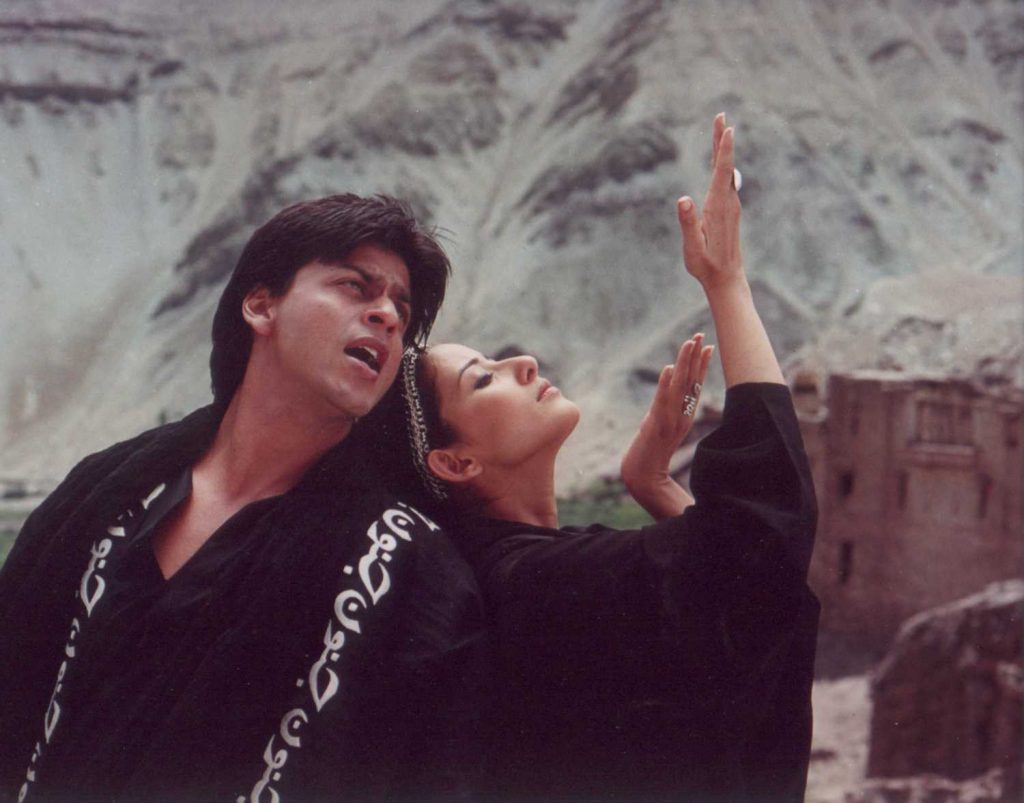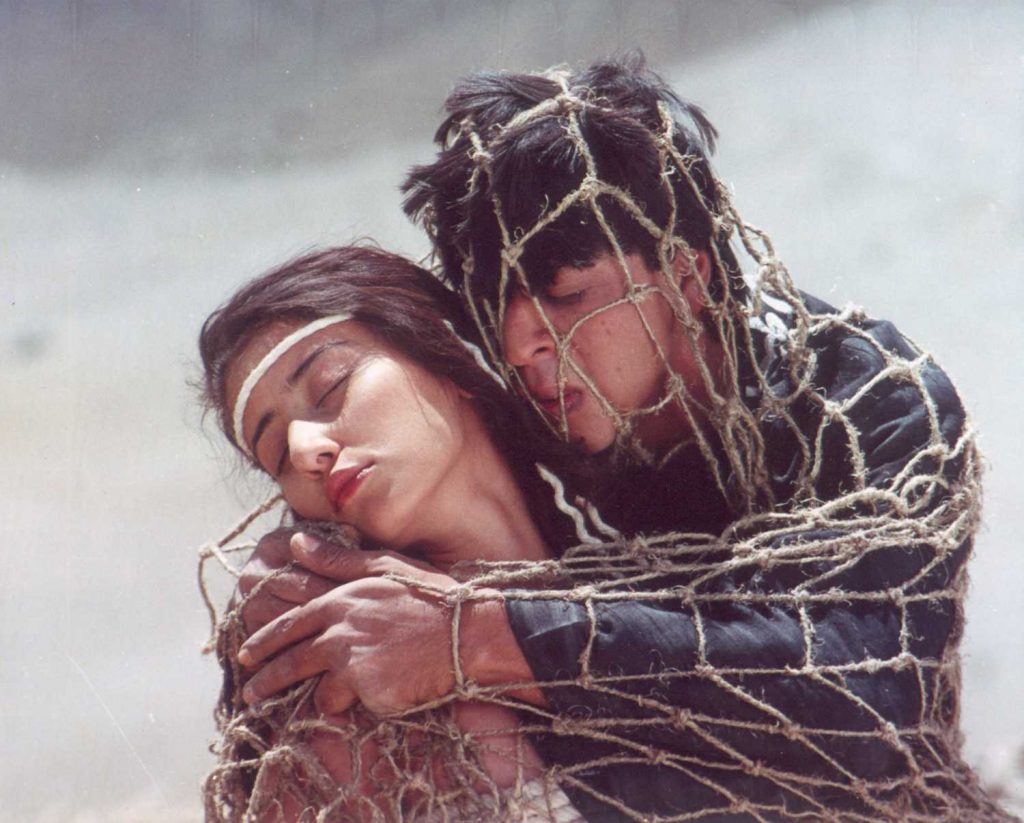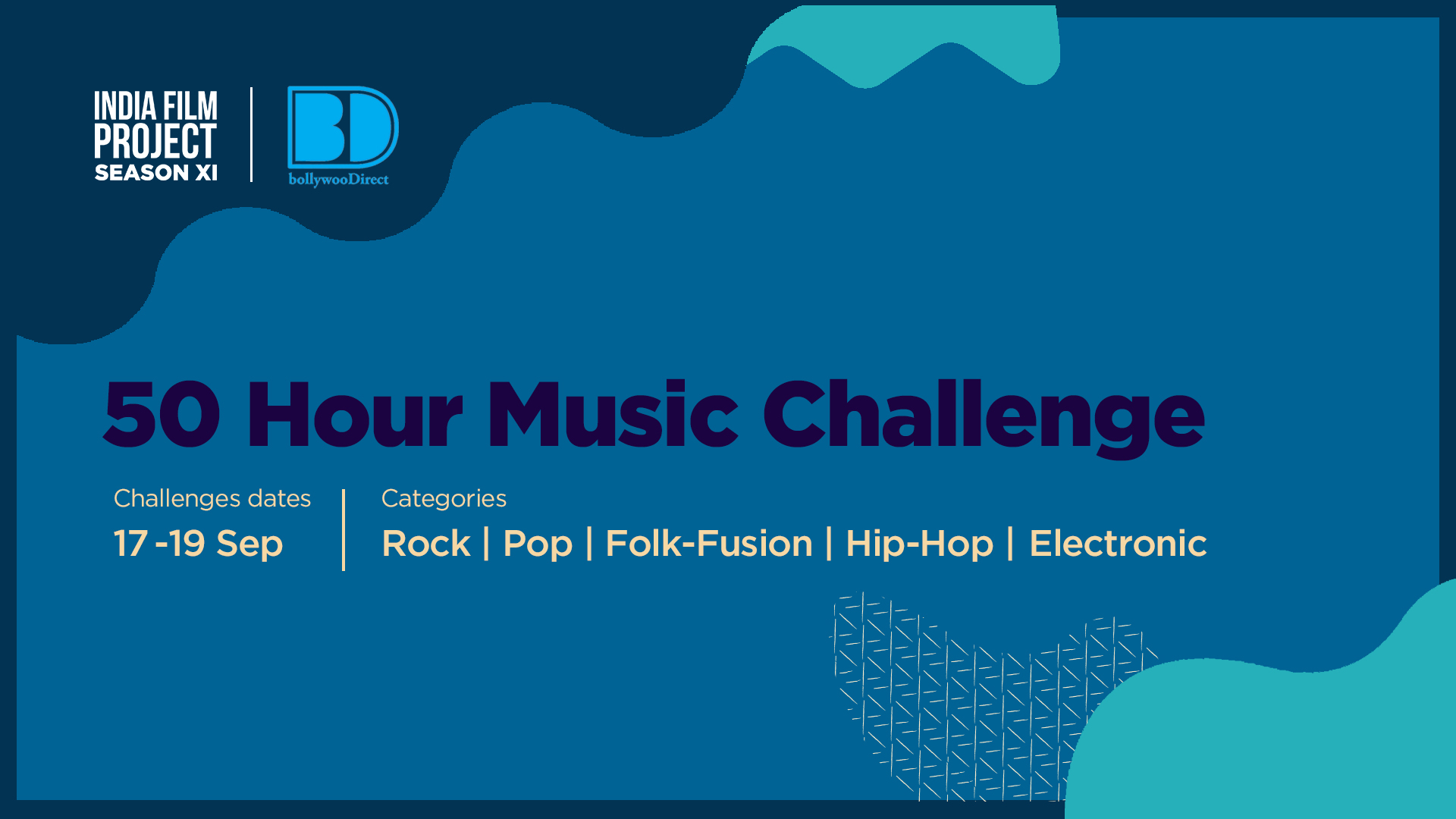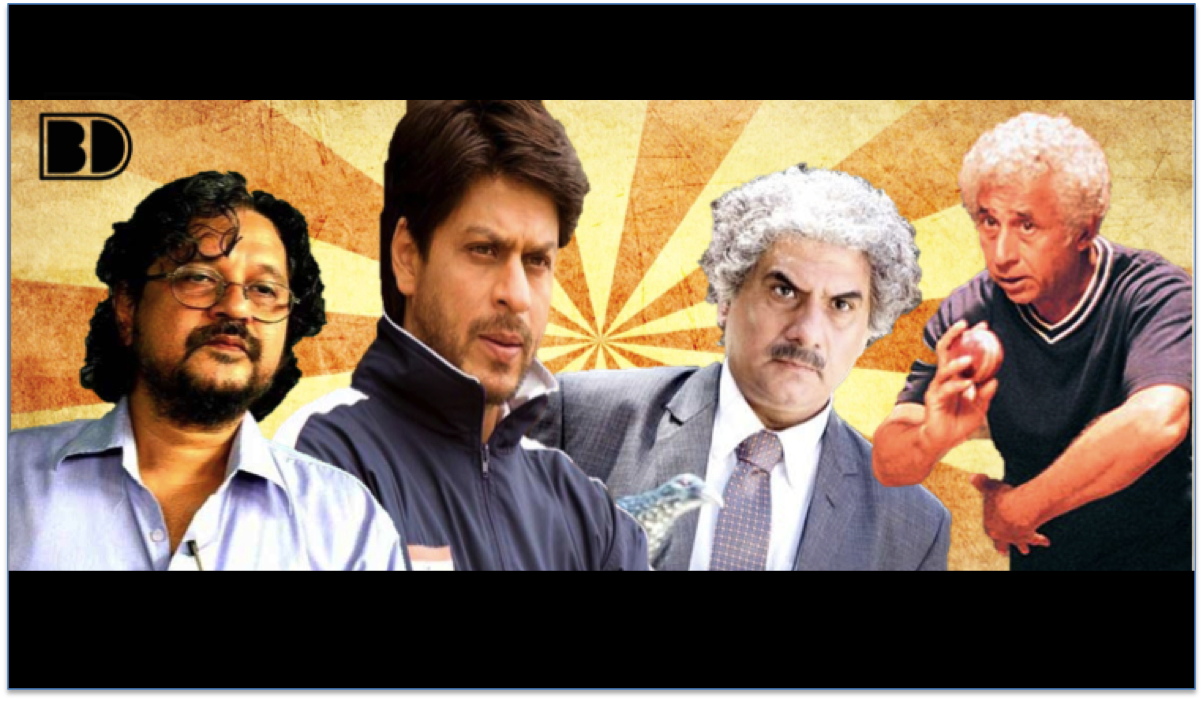Decoding The Song: Satrangi Re (Dil Se)
Dil se is Mani Ratnam’s final part of the trilogy depicting the broken nation and terrorism. It is a love story of an All India-Radio jockey, Amar (Shahrukh Khan) and a repressed voice of a terrorist out for vengeance, Meghna/Moina (Manisha Koirala). An intense, moving plot woven with an eloquent narrative, powerful performances, fine work of the music director A.R. Rahman and Santosh Sivan’s spectacular cinematography, the movie is a visual delight.
While reading about the movie, I came across the phrase, ‘7 shades or the stages of love’ as defined in Arabic literature. The movie is said to be laced around these seven shades and they are defined as,
1 Hub (Attraction)
2 Uns (Infatuation)
3 Ishq (Love)
4 Aqidat (Reverence)
5 Ibaadat (Worship)
6 Junoon (Obsession)
7 Maut (Death)
Interestingly, one of the songs of the movie too gives propinquity to the above-mentioned theme. The song, ‘Satrangi Re’ is a marvellous feat of Rahman, singer Sonu Nigam and the lyricist Gulzar. The song is set against the arid and desolate backdrop of Ladakh.
The word ‘Satrangi’ means something that is made of seven colours, like a rainbow or ‘VIBGYOR’. In the song, we see the female protagonist, Meghna to whom the song is dedicated donning the seven different colours in almost a reverse order while the male protagonist, Amar has worn only black salwar kameez, until the extreme last segment where both are adorned in white.
As the song begins, we are taken through a narrow lane to the female protagonist, Meghna in a cryptic manner, that along with the queer female consonance gives the feeling of a labyrinth of eeriness and the pending disaster that awaits. The second shot of the sequence is interestingly 24 seconds long, the camera is moving in a lane and in the same shot, it turns around as if it suddenly had changed a plan. The shot reminds of the fateful meeting of Amar and Meghna in the movie, how he met her ‘by chance’. We are introduced to Meghna donning an enigmatic black look and dancing mystically. In the same scene, we are introduced to the first stage of love, i.e., Hub or Attraction.
In the next section, we see Meghna in a white dress in a very sublime like snowy backdrop saying Ghalib’s verse, “Ishq par zor nahin hai yeh woh aatish Ghalib Jo lagaye na lage, aur bujhaaye na bane”
The meaning of these lines is that one cannot have control over love, it can’t be conquered. It is like a firework, can neither be kindled nor extinguished as per our desires.
This particular segment is very significant as Meghna and Amar are shown at a distance, separated by a lake in between. While Meghna looks like a seraphic image in white, Amar still is in black, yearning for her from the distance as if reaching her is his raison d’etre. While interpreting this scene, one more thing that I observed was the semblance of Meghna to a mirage.
We are introduced to the second stage of love, i.e., Uns or Infatuation, as mentioned in the lyrics as well, ‘Aankhon ne kuch aise chhuya , halka halka uns huya’. Amar is still wearing black while Meghna is wearing brownish-red. The earth element is also highlighted in this section.
The immediate next section introduces us to the third stage, Ishq or Love through the fire element and we see Meghna clad in a yellowish-orange sari. The lyrics as, ‘Mujhe Ishq Dilaase deta hai’.
We are shown the fourth and fifth stages of love and they are, Aqidat (Reverence) and Ibaadat (Worship). We see Meghna in green, the holy colour of Islam. This segment is very crucial as it’s the only scene shot in the night and is shot indoor in a monastery to adorn the two stages. Apart from this scene only two but the most crucial scenes of Amar-Meghna are shot at night, their first meeting and their final scene in Ladakh after which she leaves him.
Then we see them amidst water on a little piece of land sharing the same cloth piece of red colour probably depicting the hypothetical union of their bodies.
Next, we are introduced to the water element shot in the lake and we see Meghna in blue-indigo costume and Amar in the same black attire. The end of this segment is very influential as she leaves him almost lifeless as if she is the elixir he needs to survive. The act of Meghna deserting him coldly draws resemblance to the narrative of the movie, how she would always run away from him leaving him dejected.
In the next section, we see the only prop used in the entire song, i.e., net. Meghna too is wearing a mesh like costume. The prop is significantly used, we see Meghna trapped in the mesh and Amar crawls to her and becomes the part of the mesh, just like the narrative of the movie. Next, we find Meghna to be on the loose but that’s not the case as she is still tied to the trapped Amar who is embracing her.
At this moment of the movie, the next two stages are rather prophesied.
In the next stage, i.e., Junoon or Obsession, we see Amar wailing and Meghna whirling around him. Later, Meghna too becomes the part of the wailing. The lyrics are, ‘Mera jeena junoon, mera marna junoon.’ Final element, wind is introduced and Meghna is wearing Violet, the first colour of the VIBGYOR.
Finally, in the last section, Amar has crossed the distance lying between them and both are wearing white significantly against the sublime white backdrop highlighting that probably both have attained salvation through the final stage, i.e., Maut or death. The lyrics are, ‘Mujhe maut ki god mein sone de’. The sequence ends with the dancing figures of Amar and Meghna striking the posture of Michelangelo’s Pietà, with Meghna as the Virgin Mary and Amar as the martyred Christ. The death in the song marks a contrast with their death in the movie that takes place due to the bomb explosion.
In Michelangelo’s sculpture, amidst the great sadness and grief too there is calmness and acceptance, also the wounds on Jesus’s body from being nailed to the cross are made very small. He looks almost as if he has fallen asleep, not been the victim of a violent execution. In the song sequence too, Unlike the climax of the movie, the death looks less painful. As a matter of fact, death gives the sense of tranquillity as if uniting himself with Meghna was his ultimate goal and he has attained it. The lyrics enhance the significance of the visuality, ‘Mujhe maut ki god mein sone de, apne jism mein rooh dubone de.’
Elleke Boehmer and Stephen Morton in their book ’Terror and the postcolonial’ (2009) believe that the songs and their exotic locations in the film were very important in masking the impossible reconciliation between a terrorist and an uptight government agent by evoking pure fantasy. They argue that this is a phenomenon called the “liminal space of dreaming” in that the terrorist woman cannot fulfil her sexual desire so that the songs fill the void of this desire by “their sumptuousness and exotic locales” in the Ladakh region.
Anustup Basu in the article, “The Music of Intolerance” writes of the song sequence as opening up “luminous intervals for the visual consolidation of an unmerited desire, a picture of ardour that is an otherworldly life without political status.” Probably It is safe to say that it depicts the state of mind of the characters, certain things that can’t happen in real life, one fantasies about them, constantly visualising what can’t be attained in the real world.
Comparing this particular dream sequence with other sequences, one thing that got highlighted is the fact that here the protagonist doesn’t imagine his love interest reciprocating his feelings but instead treating him coldly. He thinks of fire, mesh, ruined places and other elements heightening the morbidity. There is a sense of destructiveness in their love. Amar doesn’t hope for a content, favourable future with Meghna and with his masochistic traits, he is keen to get destroyed by his lover. He doesn’t yearn to spend his life with Meghna, blissfully.
Rather he wants to die with Meghna. Why is he rejecting the idea of ‘life’? Why is Amar so obsessed with destroying himself? Does it hint to the idea of the disaster that the union of a ‘responsible’ citizen and a terrorist brings? Knowing that he cannot lead a normal, happy life with a terrorist, does he foretell his future? What is very interesting here is the fact that till here in the movie, Amar doesn’t know Meghna is a terrorist. Mise-en-abyme that the song is of the movie, is it the song prophesying their culmination? Probably yes.
Authors Sangeeta Gopal and Sujata Moorti of Global Bollywood: Travels of Hindi Song and Dance also compared Dil Se’s romance in the film to the trajectory of love in ancient Arabic literature, believing the lyrics in two of the songs to have delivered an ‘apocalyptic fatalism’ that is established and thematically resonated in the song. Maybe in the conscience of the couple, it was clear that the result of their union would be catastrophic. In the sequence, we see, Instead of usual backdrops like banal flowery gardens, lush green fields, the sequence designs space for the couple in the arid, lifeless desert of Ladakh. Except for the two lovers everything is barren.
The song, Satrangi Re offers the mise-en-abyme of the movie, it is not just a visual delight or the harmony providing the tranquil experience but is layered with the deep analytical connotations for us to unfold.
By: Shubhika






